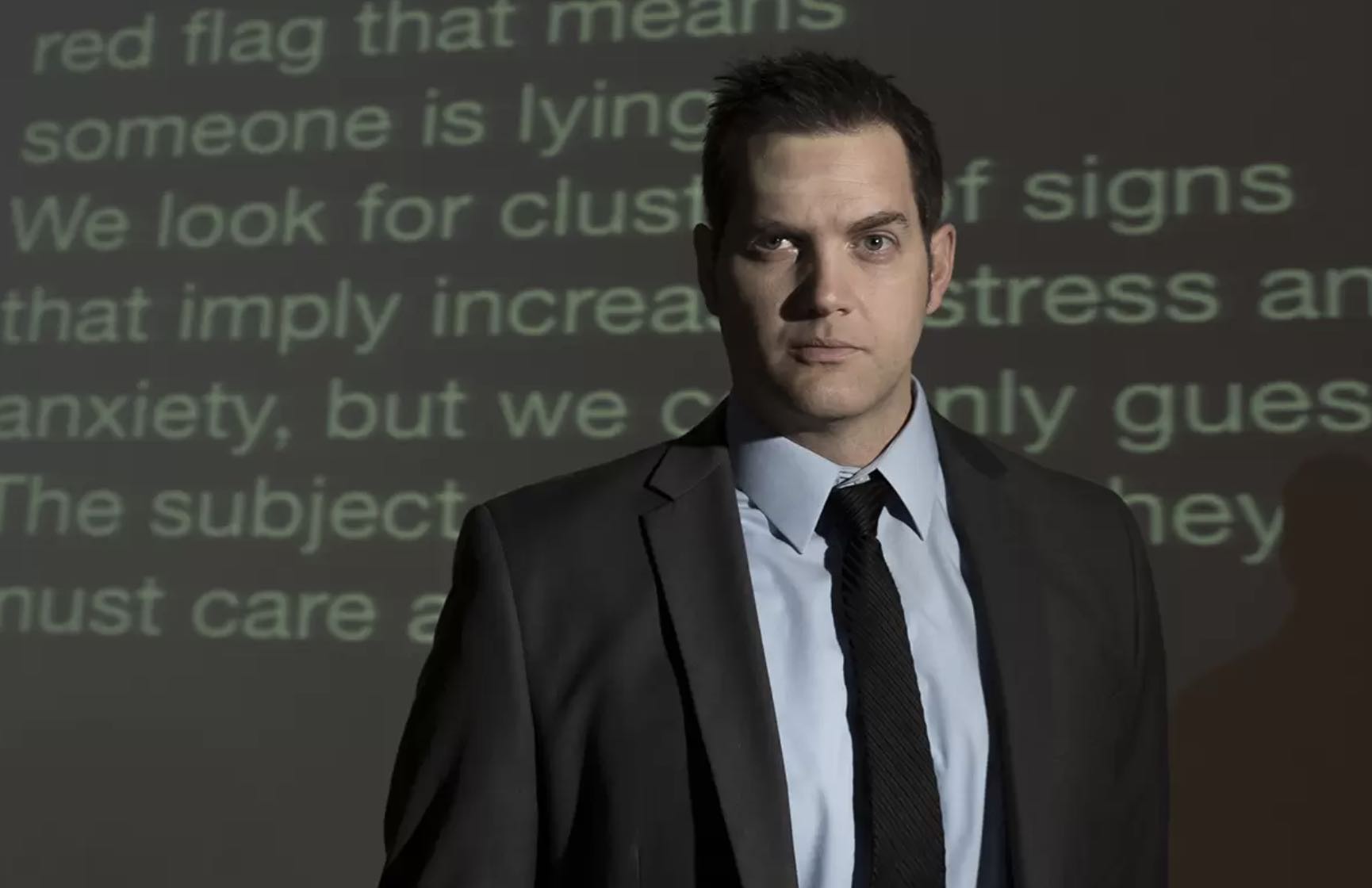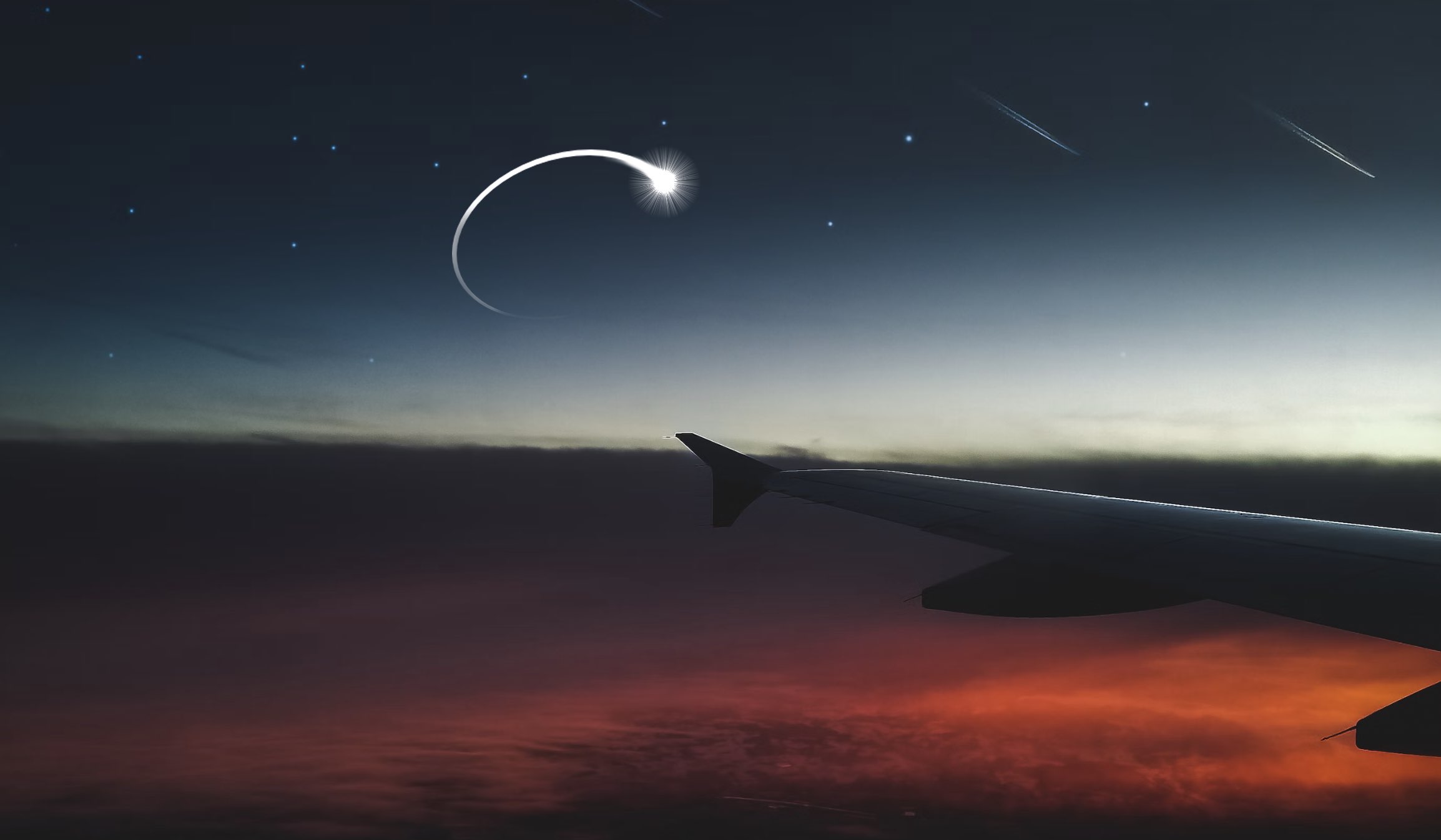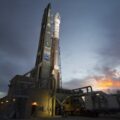Pilots and crews from more than 15 commercial aircraft say they have encountered unidentified aerial phenomena (UAP) in American airspace in recent weeks, according to eyewitness testimony and videos that detail the unusual events.
According to witnesses, the rash of incidents occurred over a seven-week period and involved sightings of bright luminous aerial objects in airspace from the American Midwest to as far west as the Pacific. The Debrief has learned that several of the objects were reportedly observed performing unconventional tight-circling maneuvers, which pilots and others involved said defied simple explanation.
The objects, which have since garnered the nickname “Racetrack UAPs” for the descriptions of their odd circular flight paths, were first reported by researcher and television personality Ben Hansen on social media and his YouTube channel, where he has featured several videos detailing the pilot encounters.
While several of the incidents were reported to air traffic controllers, no official investigations are known to have taken place, although The Debrief has learned that the events were reported to at least one Federal Aviation Administration unit tasked with responding to potential threats to American airspace.

One of the earliest known incidents in the recent spate of sightings occurred on August 18, 2022, involving a Gulfstream 650 private jet flow by former Navy F-18 pilot Mark Hulsey, along with a second pilot identifying himself only by his first name, “Keith,” while traveling between Florida and Hawaii. Passing over Los Angeles, the pilots observed between 4 and 7 luminous objects at an estimated 5000 to 10,000 feet above them performing odd, circular maneuvers.
Los Angeles Air Route Traffic Control Center (ARTCC) was contacted to determine whether the objects represented potentially conflicting traffic, although radar controllers at the facility had been unable to detect any primary targets operating near their aircraft at that time. The two pilots watched as ATC personnel attempted to paint the objects on their scopes as the UAPs maintained their peculiar, revolving flight paths above them.
Nearby, an American Airlines flight passing through the area also reported seeing the objects over the radio. Later, the Gulfstream pilots learned that calls were made to the Los Angeles ARTCC by at least two more airlines that saw the objects. Neither of the principal witnesses believed that the objects they observed were any kind of conventional aircraft, based on their odd maneuvering and the speed they exhibited.

The Debrief independently obtained transcripts of radio communications recorded on the night of the August incident with the help of researcher Dave Beaty, who filed a Freedom of Information Act request for documents related to the incident. A portion of the transcript Beaty provided to The Debrief, which identifies the Gulfstream as “Twighlight (sic) 670”, reads as follows:
Twighlight 670 (04:58): LA Center Twighlight 670 Uh, Go Ahead, We’ve got a few aircraft here, Going around in circles. higher altitude than us. Any idea what they are?
LA Center (05:06): No, I do not. OK Strange. Gulf 41. Stand by and Twighlight 670. Say the last part again.
Twighlight 670 (05:23): Yeah, they look to be, you know, much higher than we are, They’re going around in circles so, maybe three aircraft.
LA Center (05:32): Roger. Um, yeah, I don’t know. You’re not entering any military or space or anything? I’m not sure.
Speaker 3 (05:38): Roger that
LA Center (05:39): Delta 41 go.
Twighlight 670 (05:42): Uh, Delta 41. Uh, yeah, we’re just wondering if uh, we needed a frequency. Change.
The day after the August 18th incident, the Gulfstream pilots told Hansen that a closed-door meeting occurred at Los Angeles Center, where data about the incident was reviewed and forwarded to the Joint Air Traffic Operations Command (JATOC), the FAA’s response unit for events that either represents a potential threat or are otherwise capable of impacting the National Airspace System (NAS) or national security.
According to Hansen, the meeting was in response to a phone call placed to JATOC by Hulsey, who had been provided contact details by one of the air traffic controllers he had spoken to the previous night.
“He didn’t tell him what the number was,” Hansen told The Debrief in a phone call. “He was kinda cloak and dagger with it.”
“This is the number that doesn’t exist,” the pilot was reportedly told. Hansen says the pilot was not certain which agency he had contacted at that point.
“They told him they were a government agency that was set up after 9/11,” Hansen says, who asked for the number from the pilot and performed a reverse search online.
“It came back to JATOC,” Hansen was able to confirm. During his call with an official from the agency, Hulsey told Hansen he was informed that information about the incident would be forwarded for review as a part of the Department of Defense’s UAP investigations.
“They told him they had already received the tapes and data from the previous night, and that they would be forwarding that on,” the pilot told Hansen, adding that “They were working with some efforts [related to] the new UFO hearings and task forces.”
Following the August 19 meeting, Hulsey initiated contact with Hansen and the Mutual UFO Network (MUFON) about his experience. Upon receiving the pilot’s report and conducting follow-up interviews, Hansen posted a video on his YouTube channel (see below) on October 6, 2022, providing details about the incident.
Where Was the Data Sent?
Despite Hansen’s confirmation that JATOC had been in communication with the pilot who contacted him, additional inquiries about the August 18 incident have only resulted in more questions.
“My FOIA request for all information and communications between L.A. Center and JATOC, or any other agency—I asked for email communications and any other data to show that they were forwarded to another agency—and it said that there were no such records,” Hansen told The Debrief.
It came back that they didn’t have any communication,” Hansen added. “So they’re denying that they talked to JATOC, and we know that JATOC did from our pilot; we already have that information. So there’s a lack of transparency.”
Hansen told The Debrief that he did not know whether the information was sent to any other agencies, but that recordings he obtained of communication between the pilots and air traffic controllers seemed at times to imply that this occurred.
“I don’t know if it went to any other agencies,” Hansen said. “At least in this case [they] had kicked it up to the higher-ups, and you can hear it in the audio. In fact, the radar controller said that the higher-ups were asking if there were any more reports of this as she’s reaching out to other airlines. And that’s when American Airlines reported.”
Researcher Dave Beaty, who has followed the story with his own independent investigations since Hansen released his initial report, told The Debrief that he learned that after the meeting at Los Angeles Center, information about the August 18 incident was reportedly also sent to the Domestic Events Network (DEN).
According to a July 2, 2014 notice issued by the Federal Aviation Administration (FAA), “ATC must notify the Domestic Events Network (DEN) Air Traffic Security Coordinator (ATSC) of any situation that involves reported or observed unauthorized or suspicious unmanned aircraft.” The notice further states that such reports include “Any other situation that may indicate a suspicious aircraft, including any reported or observed unauthorized unmanned aircraft activity or remote controlled model aircraft that deviate from normal practice areas/flight activities or would be considered suspicious or a safety hazard.”
“The fact that LA operations reported the sighting to the Domestic Events Network suggests they also took the report seriously,” Beaty told The Debrief in an email.
Additional UAP Witnesses Come Forward
After the story appeared on social media, Hansen says that other pilots began reaching out to him with similar encounters.
“These events took place both before and after the Los Angeles event,” Hansen told The Debrief. One of the incidents, which occurred on August 10, 2022, involved observations by a dozen crew members from six different airlines en route between Hawaii and the U.S. mainland. A pair of Hawaiian Airlines pilots who spoke with Hansen reported the objects they witnessed “were visible for hours” and appeared to pace their aircraft while remaining at relative positions in the sky. However, unlike celestial objects, the purported UAPs were seen intermittently changing their luminosity and moving in circuitous patterns resembling those reported during the August 18 incident over California.
“Onboard TCAS radar assisted the pilots in determining the position of other known aircraft around them and the distance between each observing airline,” Hansen says. Based on the radar information, all of the pilots determined that the objects they observed were inconsistent with conventional aircraft, celestial phenomena, flares, or other known objects.
Another incident Hansen learned of reportedly occurred within 24 hours of the events of August 18, involving a UAP observation near Springfield, Missouri. Shortly after midnight on August 19, a report was received by Memphis ARTCC from a UPS flight, whose pilots observed a series of unusual lights to the north of their aircraft. The UPS pilots similarly queried Memphis ARTCC about whether they had flown into military airspace; however, no military activity notifications had been issued, and air traffic controllers could detect no aircraft on their radars.
Within minutes of the initial observation, pilots with a United Airlines and a Southwest Airlines flight also contacted Memphis ARTCC to report observations of these objects. One of the pilots, the captain of Southwest Airlines flight 549, had served for two decades as a Navy helicopter pilot prior to entering commercial aviation. According to an account of his observations provided to Hansen, the pilot described seeing two or three objects moving “in an orbital pattern” as their luminosity became “intensely bright” before dimming. The pilot also dismissed the possibility that the objects he observed were satellites, and that their intensity was like nothing he had seen before, including observations with the aid of night vision equipment during Navy missions. The pilot and first officer said the objects were observed for close to half an hour. (Update 10/20/22: A plausible explanation for the August 19, 2022, observations near Springfield, Missouri, described above has been presented by user Flarkey on the Metabunk forum, and can be read here. H/T to Mick West.)
In the weeks that followed, several similar UAP reports from commercial pilots began to come to the attention of civilian researchers through social media channels.
Systemic Problems: A Culture of Ridicule
In March 2021, an investigation by The Debrief revealed several reports by commercial pilots involving unnerving encounters with unidentified aerial phenomena that made their way into the NASA-maintained Aviation Safety Reporting System (ASRS), a database detailing incidents related to aviation safety that the space agency operates on behalf of the FAA.
As the single largest transportation agency within the United States government, the FAA is responsible for the regulation of all activities related to civil aviation in the U.S. and in airspace over surrounding waters. Yet at the time The Debrief reported on its findings from searches of the ASRS database, the FAA’s official position on incidents like those reported since early August had been that the agency did not investigate them.
“The FAA doesn’t track these reports,” an FAA spokesperson told Forbes in June 2021, just days after the release of a significant report from the Office of the Director of National Intelligence (ODNI) that examined 144 incidents involving UAP encountered by the U.S. military. According to the ODNI report, the FAA was listed among several U.S. federal government agencies that provided data they collected on unrecognized aerial objects to the UAP Task Force in advance of the report’s publication.
In a follow-up investigation last August, The Debrief learned that the FAA does, in fact, document information on UAP incidents that can be corroborated by radar, contrary to its long-held position on the matter, which it continued to publicly convey to outlets like Forbes and others in the days following publication of the ODNI report.
“The Federal Aviation Administration documents Unidentified Aerial Phenomenon (UAP) sightings whenever a pilot reports one to an air traffic control facility,” an FAA spokesperson wrote in an email to The Debrief. “If the pilot report can be corroborated with supporting information such as radar data, it is shared with the UAP Task Force.”
Perhaps due in part to the FAA’s reticence to collect UAP reports in years past, many of the pilots Hansen says he has spoken with said they were not aware of whom they should contact, as they were unclear as to whether there was any designated government entity where they could report UAP observations. However, some pilots also feared reporting UAP sightings could negatively impact their employment, even leading to their termination.
In a call with The Debrief, Hansen says that the systemic problems that pilots and other aviation professionals face when reporting UAP incidents will require significant changes within the agencies that are tasked with regulating operations in American civil airspace.

“It would have to start from the top,” Hansen said. “It has to, I believe, have some protections in place similar to what Congress is trying to do right now with military whistleblower protection,” he added, in reference to recent provisions by lawmakers aimed at protecting government employees who may be able to come forward with knowledge of government programs related to UAP.
Key provisions within the bill, first reported by The Debrief in July, include “Language calling for the protection of witnesses that share UAP-related information from liability, as well as retaliation, for the breach of NDA.”
“If we had something similar in place for civilians, I think that pilots and crew, controllers, all those involved would feel more willing to talk to both government agencies and to private researchers,” Hansen says.
“If they feel like they can do that with the protection of legislation to stop both criminal and civil retribution against them, then I think they’re going to talk, and we’re going to see reports just flooding in.”
“The main problem right now is this is their livelihood,” Hansen adds. In some cases, Hansen says pilots have expressed concern about rumors that their mental health may be questioned after they report UAP sightings, or that filing such reports could even result in the loss of their medical certification to fly. In other instances, pilot concerns over reporting UAP appear to be rooted in pressure they perceive from their employers.
“Even though they’re not sharing, let’s say, classified information like somebody flying a military mission, they are sharing information that involves a company, an airline,” Hansen told The Debrief. “And the airlines have put extreme pressure on them in some cases on them to not involve, not just their names, but the fact that these pilots are seeing things.”
Hansen speculates the negative attitudes toward UAP that larger airline companies appear to have could arise out of seeking to protect their public image from the harm they feel could result from pilots speaking out about UAP incidents.
“They have not embraced the fact that this is a phenomenon that is already confirmed to exist,” Hansen says, citing sources like the June 2021 ODNI report and its collection of information related to dozens of incidents involving UAP that remain unidentified. “It’s mainstream, and there’s no reason to deny that it’s happening. They should be embracing it, and that’s the problem. Everyone’s trying to run away from the stigma still, and it’s trickling down to the frontline workers.”
Fundamentally, the kind of information pilots—both commercial and military—may be able to provide about their UAP observations could be vital in the ongoing effort toward obtaining a better understanding of the nature and origins of UAP.
“We need that information,” Hansen says.
Micah Hanks is Editor-in-Chief and Co-Founder of The Debrief. Follow his work at micahhanks.com and on Twitter: @MicahHanks. Chrissy Newton is Media Director at The Debrief, and host of the podcast “Rebelliously Curious,” available on The Debrief’s YouTube Channel and all major podcast platforms.
Special thanks to researcher Dave Beaty, who contributed to this report.

